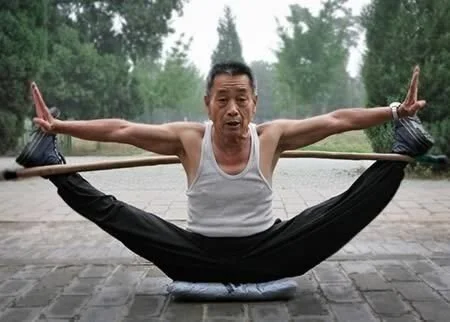
Why Stretching After a Workout is Super Important
After a tough workout, it might be tempting to skip stretching and head straight to chilling out. But stretching is really important and can make a big difference in how your body feels and performs. Here’s why you should always make time to stretch after exercising:
Become More Flexible
Stretching after a workout helps improve your flexibility. When your muscles are warm, they can stretch more easily. This means you can move more freely, whether you're playing sports or just doing everyday stuff. Better flexibility can help you perform better in sports and prevent injuries.
Feel Less Sore
You know that sore feeling you get the day after a hard workout? That’s called delayed onset muscle soreness (DOMS). Stretching helps reduce this soreness by increasing blood flow to your muscles. This helps clear out waste products and brings in nutrients that help your muscles recover faster. While stretching might not completely get rid of soreness, it can make it less intense and help you feel better sooner.
Prevent Injuries
Stretching regularly can help prevent injuries. Tight muscles are more likely to get strained or pulled. By keeping your muscles flexible, you’re less likely to hurt yourself during workouts or other activities. Stretching also helps your joints move better, making your movements smoother and safer.
Chill Out and Relax
Stretching isn’t just good for your body—it’s good for your mind too. After a workout, stretching can help you relax and de-stress. It activates your body’s relaxation system, helping you feel calm and ready to rest. Deep breathing while you stretch can make you feel even more relaxed and help you cool down after your workout.
How to Stretch Right
To get the most out of your post-workout stretching, follow these tips:
1. Stretch All Over: Make sure to stretch all the major muscles you used in your workout. Don’t forget your legs, arms, back, and shoulders.
2. Hold for 15-30 Seconds: Hold each stretch for at least 15 to 30 seconds. This gives your muscles time to lengthen and relax.
3. Breathe Deeply: Take deep breaths while you stretch. Inhale through your nose and exhale slowly through your mouth. This helps your muscles get oxygen and helps you relax.
4. No Pain: Stretching shouldn’t hurt. You should feel a gentle pull in your muscles, but not pain. If it hurts, ease off a bit.
5. Do It Regularly: Make stretching a regular part of your workout routine. The more consistent you are, the more benefits you’ll see over time.
Wrapping It Up
Stretching after your workout is super important for keeping your body healthy and feeling good. It helps you become more flexible, reduces soreness, prevents injuries, and helps you relax. So next time you finish exercising, take a few minutes to stretch. Your body will thank you, and you’ll be ready to take on whatever comes next with more energy and less pain. Make stretching a habit, and enjoy all the awesome benefits it brings!
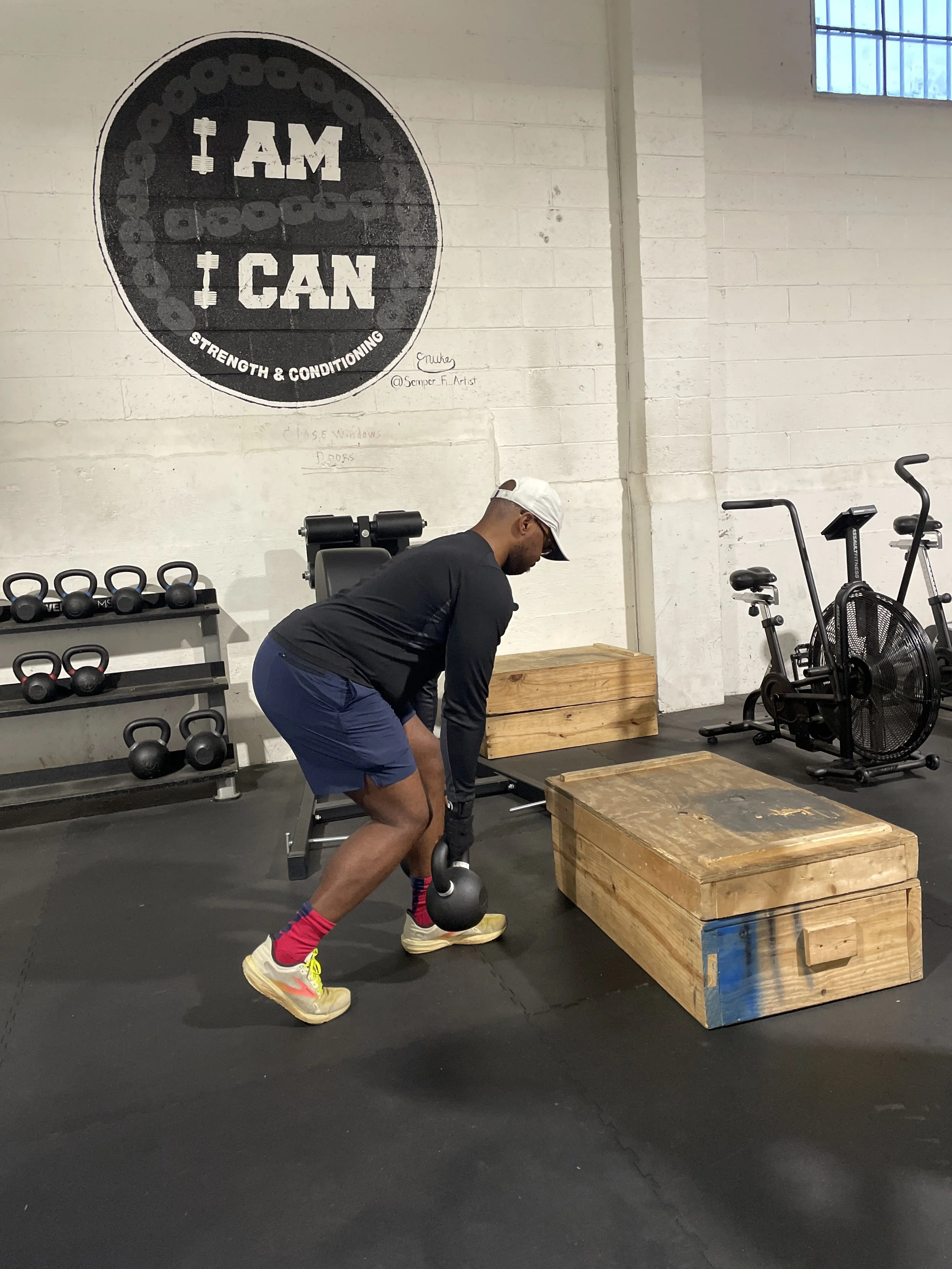
Boost Your Strength and Conditioning with These Cool Techniques
Getting stronger and fitter isn't just about lifting weights or running. There are many fun and different ways to improve your strength and conditioning that you might not have tried yet. Here are some cool techniques that can help you break through your fitness plateaus and make working out more exciting.
1. Isometric Training
Isometric exercises are all about holding a position without moving. Think of holding a plank or a wall sit. Your muscles work hard to stay in place, which can make them stronger and more durable.
Benefits:
- Makes muscles stronger and more durable.
- Helps your joints stay stable.
- Low risk of getting hurt since there's no movement.
2. Occlusion Training (Blood Flow Restriction)
Occlusion training involves wrapping a band around your arms or legs to limit blood flow while you exercise. This sounds intense, but it helps your muscles grow even when you use lighter weights.
Benefits:
- Builds muscles with lighter weights.
- Less stress on your joints.
- Helps muscles recover faster.
3. Flow Workouts
Flow is a workout where you move like different animals. It combines moves from gymnastics, breakdancing, and parkour. It’s fun and helps improve your flexibility, strength, and coordination.
Benefits:
- Makes you more flexible.
- Strengthens your core.
- Improves coordination and balance.
4. Unilateral Training
Unilateral training means working on one side of your body at a time. This helps fix muscle imbalances that can happen from using both sides together all the time. For example, try single-leg squats or one-arm presses.
Benefits:
- Fixes muscle imbalances.
- Strengthens your core.
- Improves overall strength.
5. Sandbag Training
Sandbag training is when you use a bag filled with sand as your weight. The sand shifts around, making your muscles work harder to keep it steady. It’s a great way to build real-life strength.
Benefits:
- Builds functional strength.
- Strengthens your grip.
- Works your core muscles.
6. Plyometric Training
Plyometric exercises are explosive moves like jumps, bounds, and sprints. These exercises help you get faster and more powerful. They’re great for sports and other physical activities.
Benefits:
- Increases power.
- Makes you faster and more agile.
- Improves coordination.
7. Loaded Carries
Loaded carries involve walking while holding weights. You can carry weights in one or both hands, like in a farmer’s walk or an overhead carry. This type of exercise builds strength and endurance.
Benefits:
- Strengthens your whole body.
- Builds core stability.
- Improves grip strength.
How to Use These Techniques
You can start by adding one or two of these new techniques to your routine every few weeks. This gives your body time to adapt. For example, you could add isometric exercises to your warm-up, include flow movements in your cool-down, or replace a regular lifting session with sandbag training once a week.
Conclusion
Trying new ways to get stronger and fitter can help you break through plateaus and keep your workouts fun. Each of these techniques targets different parts of your physical abilities, giving you a well-rounded fitness routine. So, don’t be afraid to step out of your comfort zone and give these new exercises a try. You might find something you really enjoy and that helps you reach your fitness goals faster!
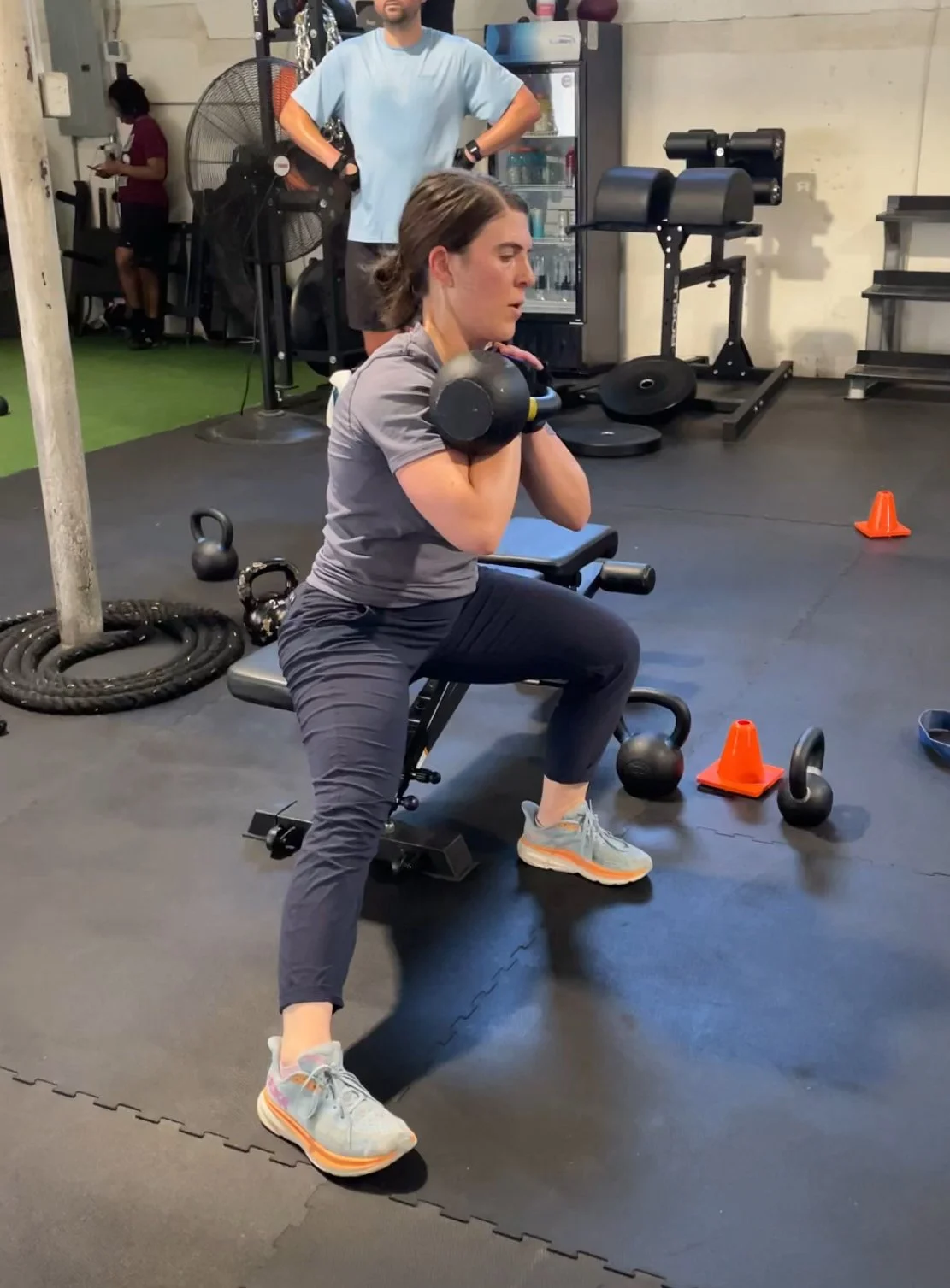
Mastering Body Control: The Key to Enhanced Fitness and Performance
Body control is an often overlooked yet fundamental aspect of fitness and athletic performance. It's the foundation upon which strength, agility, flexibility, and endurance are built. Whether you're a professional athlete or a fitness enthusiast, mastering body control can significantly elevate your training outcomes and overall physical abilities.
What is Body Control?
Body control refers to the ability to manage the movement and position of your body in space. It involves a combination of balance, coordination, proprioception (awareness of body position), and kinesthetic awareness (understanding of body movements). Effective body control allows for precise, efficient, and safe movement, reducing the risk of injury and enhancing performance across various physical activities.
Why is Body Control Important?
1. Injury Prevention: Good body control helps you move more efficiently and safely. It reduces the likelihood of strains, sprains, and other injuries that can occur due to poor movement patterns or lack of awareness.
2. Improved Performance: Individuals with superior body control can execute movements more effectively. This translates to better performance in sports and activities that require quick, precise movements, such as gymnastics, martial arts, and dance.
3. Enhanced Coordination and Balance: Better body control improves your ability to coordinate different parts of your body and maintain balance, which is crucial for activities like yoga, pilates, and even everyday tasks.
4. Greater Efficiency: When you have control over your body movements, you use less energy to perform tasks. This efficiency can lead to improved endurance and overall stamina.
How to Improve Body Control
Improving body control involves training that focuses on several key areas: balance, strength, flexibility, and proprioception. Here are some effective strategies and exercises:
1. Balance Training
Balance exercises enhance your stability and coordination. These can be simple yet effective:
- Single-Leg Stands: Stand on one leg for 30 seconds, then switch. To increase difficulty, close your eyes or stand on an unstable surface like a foam pad.
- Balance Board Exercises: Using a balance board can challenge your stability and improve your core strength.
2. Strength Training
Strengthening your muscles, particularly the core, supports better body control:
- Planks and Side Planks: These exercises target your core muscles, which are crucial for stability and balance.
- Squats and Lunges: These lower-body exercises improve strength and coordination.
3. Flexibility Training
Flexibility is essential for smooth and controlled movements:
- Dynamic Stretching: Incorporate dynamic stretches like leg swings and arm circles into your warm-up routine to enhance flexibility.
- Yoga and Pilates: These practices combine flexibility, strength, and balance training, making them excellent for improving body control.
4. Proprioceptive Training
Proprioception exercises help you develop a better sense of your body's position and movement:
- Foam Rolling: Using a foam roller can improve muscle elasticity and proprioception.
- Agility Drills: Ladder drills, cone drills, and other agility exercises can enhance your proprioceptive abilities and overall coordination.
Practical Tips for Mastering Body Control
1. Consistency is Key: Regular practice is essential for improving body control. Incorporate balance, strength, and flexibility exercises into your routine several times a week.
2. Mind-Body Connection: Focus on your movements and be mindful of how your body feels and responds. This awareness will help you make necessary adjustments to improve control.
3. Progress Gradually: Start with basic exercises and gradually increase the difficulty as your control improves. For example, once you master single-leg stands on a flat surface, progress to unstable surfaces or add movement.
4. Integrate Functional Movements: Functional exercises mimic everyday activities and can help improve your overall body control. Movements like reaching, bending, and twisting are integral to daily life and sports.
5. Seek Professional Guidance: Working with a trainer or physical therapist can provide personalized guidance and ensure you're performing exercises correctly to maximize benefits.
Conclusion
Mastering body control is a transformative aspect of fitness that enhances not only athletic performance but also everyday functional movements. By incorporating balance, strength, flexibility, and proprioception exercises into your routine, you can improve your body control, reduce injury risk, and achieve your fitness goals more efficiently. Start today, stay consistent, and watch your physical capabilities reach new heights.
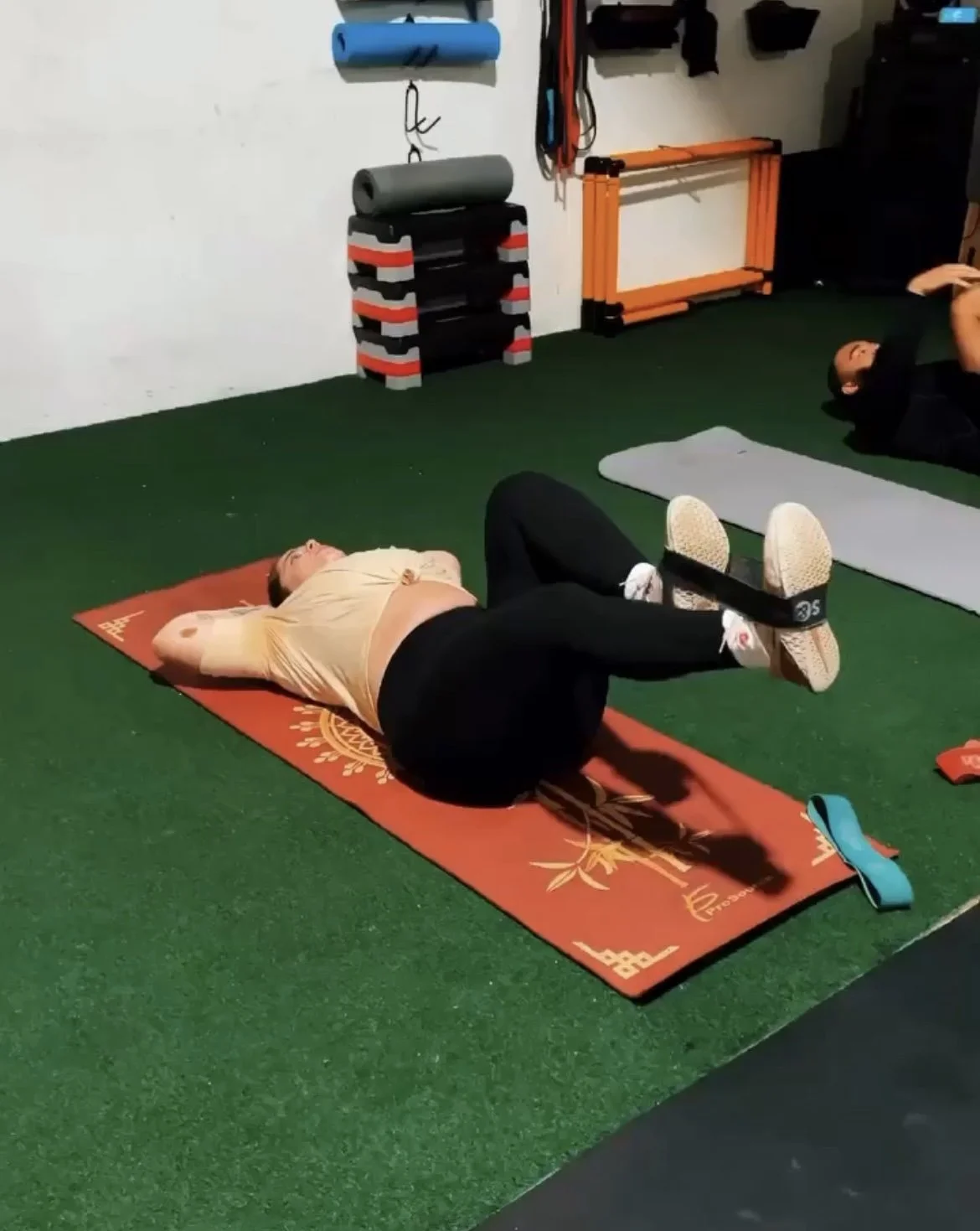
Rediscovering Fitness Through Play: How Fun and Games Can Transform Your Workout Routine
In the quest for better health and fitness, many people often get caught up in the lack of variety of traditional workout routines. Hours spent on treadmills, lifting weights, or following strict exercise regimens can sometimes feel more like a chore than an enjoyable activity. But what if there was a way to make fitness fun again? Enter the world of fitness through play—a concept that blends physical activity with elements of fun, creativity, and playfulness to make working out an enjoyable and sustainable part of life.
The Concept of Fitness Through Play
Fitness through play is not a new idea, but it is gaining renewed attention as people look for more engaging ways to stay active. This approach incorporates playful activities that not only promote physical health but also mental well-being. By turning exercise into a game or a playful challenge, individuals can break free from the conventional and often repetitive nature of workouts.
Benefits of Playful Fitness
1. Increased Motivation and Consistency: One of the biggest challenges in maintaining a fitness routine is staying motivated. Playful activities are naturally engaging and enjoyable, making it easier to stick with them over time. Whether it's a game of tag, an obstacle course, or a dance-off, the fun element keeps you coming back for more.
2. Improved Mental Health: Play is a natural stress reliever. Engaging in playful fitness activities can reduce anxiety, improve mood, and boost overall mental health. The laughter and social interaction that often accompany these activities release endorphins, which are natural mood lifters.
3. Enhanced Physical Fitness: Playful activities often involve a variety of movements that can improve strength, agility, balance, and coordination. This variety ensures a well-rounded workout that targets different muscle groups and improves overall fitness levels.
4. Social Connection: Many playful fitness activities can be done in groups, fostering social connections and a sense of community. Whether it's a family game night or a group fitness class that incorporates play, these interactions can enhance your social life and provide a support network for your fitness journey.
Ideas for Incorporating Play into Your Fitness Routine
1. Sports and Games: Engage in team sports like soccer, basketball, or volleyball. If you prefer individual activities, consider games like frisbee, badminton, or even a simple game of catch. These activities can provide a great cardiovascular workout while also being fun and competitive.
2. Dance: Dance is a fantastic way to combine music, movement, and play. Whether it's a formal dance class, a night out dancing with friends, or just dancing around your living room, this activity can improve cardiovascular health, coordination, and flexibility.
3. Obstacle Courses: Set up an obstacle course in your backyard or at a local park. Use household items like chairs, ropes, and cones to create a challenging and fun course that tests your agility, strength, and endurance.
4. Fitness Apps and Video Games: Technology has made it easier to incorporate play into fitness. There are numerous fitness apps and video games that turn exercise into a game. Games like "Just Dance," "Ring Fit Adventure," and "Zombies, Run!" can make your workouts more engaging and enjoyable.
5. Outdoor Adventures: Activities like hiking, rock climbing, and paddleboarding are great ways to stay active while enjoying the great outdoors. These activities are inherently playful and can provide a full-body workout.
How to Get Started
1. Set Playful Goals: Instead of setting traditional fitness goals like "lose 10 pounds" or "run a marathon," set goals that focus on fun and play. For example, aim to try a new sport every month or participate in a fun run with friends.
2. Mix It Up: Variety is key to keeping things interesting. Mix up your routine with different playful activities to prevent boredom and keep your body challenged.
3. Involve Others: Invite friends, family, or coworkers to join in on the fun. Having a partner or a group can make playful fitness activities more enjoyable and can help keep you accountable.
4. Listen to Your Body: Play should never be forced. Listen to your body and choose activities that feel good and bring you joy. The goal is to make fitness a fun and sustainable part of your lifestyle.
Conclusion
Fitness through play is a refreshing and effective way to make physical activity an enjoyable part of your life. By incorporating elements of fun, creativity, and social interaction, you can transform your workout routine into something you look forward to. So, let go of the traditional notions of exercise and rediscover the joy of play. Your body and mind will thank you.

Unleashing the Power of Compound Exercises: Building Strength and Efficiency
When it comes to achieving your fitness goals, whether it's gaining muscle, burning fat, or improving overall strength and endurance, incorporating compound exercises into your routine can make a significant difference. Unlike isolation exercises that target specific muscles, compound exercises engage multiple muscle groups simultaneously, leading to more efficient workouts and greater functional strength. In this blog, we'll dive into the benefits of compound exercises, explore some popular examples, and provide tips for incorporating them into your fitness regimen.
Understanding Compound Exercises
Compound exercises are movements that involve multiple joints and muscle groups working together to perform a single exercise. Unlike isolation exercises, which isolate a single muscle group, compound exercises recruit multiple muscles, resulting in a higher caloric expenditure and greater overall muscle activation. This makes them ideal for individuals looking to maximize their time in the gym and achieve functional strength that translates into real-world activities.
Benefits of Compound Exercises
1. Efficiency: Compound exercises allow you to work multiple muscle groups simultaneously, reducing the need for numerous isolation exercises. This means you can achieve a full-body workout in less time, making them ideal for individuals with busy schedules.
2. Functional Strength: Since compound exercises mimic natural, everyday movements, they help improve overall functional strength. This translates into better performance in activities of daily living, such as lifting groceries, climbing stairs, or playing sports.
3. Increased Caloric Expenditure: Due to the higher muscle recruitment involved, compound exercises lead to greater calorie burn compared to isolation exercises. This makes them an effective choice for individuals looking to burn fat and improve overall body composition.
4. Muscle Symmetry and Balance: By engaging multiple muscle groups simultaneously, compound exercises promote muscle symmetry and balance. This reduces the risk of muscle imbalances and potential injuries that can occur with excessive focus on isolation exercises.
Popular Compound Exercises
1. Squats: Considered the king of compound exercises, squats target the quadriceps, hamstrings, glutes, and lower back. They also engage stabilizer muscles throughout the core and upper body, making them a highly effective full-body exercise.
2. Deadlifts: Deadlifts work the posterior chain, including the hamstrings, glutes, lower back, and traps. They also engage the core and upper body muscles, making them an excellent exercise for building overall strength and power.
3. Bench Press: The bench press targets the chest, shoulders, and triceps while also engaging the core and stabilizer muscles. It's a fundamental compound exercise for developing upper body strength and muscle mass.
4. Pull-Ups/Chin-Ups: These bodyweight exercises primarily target the back, biceps, and shoulders while also engaging the core and forearm muscles. They're effective for building upper body strength and improving grip strength.
Incorporating Compound Exercises into Your Routine
To reap the benefits of compound exercises, aim to incorporate them into your workouts at least two to three times per week. Start with a weight that allows you to perform each exercise with proper form and gradually increase the weight as you build strength. Additionally, consider adding variety to your routine by incorporating different variations of each exercise or combining multiple compound movements into a single workout.
In conclusion, compound exercises are a cornerstone of any effective fitness program. By engaging multiple muscle groups simultaneously, they offer numerous benefits, including increased efficiency, functional strength, and improved overall body composition. Whether you're a beginner or an experienced gym-goer, incorporating compound exercises into your routine can help you achieve your fitness goals more effectively and efficiently. So, next time you hit the gym, remember to prioritize compound movements for maximum results.

Power Up Your Workout with Plyometrics
Plyometrics, often referred to as "jump training," is a dynamic form of exercise that focuses on explosive movements to enhance power, speed, and agility. Originally developed for athletes, plyometrics has gained popularity among fitness enthusiasts due to its effectiveness in burning calories, improving cardiovascular health, and enhancing overall performance. In this blog post, we'll dive into the world of plyometrics, exploring its benefits, key exercises, and how to incorporate it into your fitness routine.
Benefits of Plyometrics:
1. Improved Power and Speed:
Plyometric exercises involve quick and powerful movements, which activate fast-twitch muscle fibers, enhancing muscular power and speed. This translates to better performance in activities requiring bursts of energy, such as sprinting, jumping, and agility drills.
2. Enhanced Athletic Performance:
Athletes across various sports, including basketball, soccer, and volleyball, incorporate plyometrics into their training regimen to improve their explosiveness, agility, and vertical jump height. By enhancing these athletic attributes, athletes can outperform their competitors on the field or court.
3. Increased Caloric Burn:
Plyometric workouts are high-intensity in nature, leading to a significant calorie expenditure. The explosive movements not only build strength and power but also elevate the heart rate, promoting fat loss and cardiovascular health.
4. Minimal Equipment Required:
One of the beauties of plyometrics is its simplicity. Many plyometric exercises can be performed using only your body weight, making them accessible and convenient for individuals of all fitness levels.
Key Plyometric Exercises:
1. Squat Jumps:
Begin in a squat position with your feet hip-width apart. Explosively jump upward, extending your hips and knees fully. Land softly back into the squat position, focusing on control and stability. Repeat for the desired number of repetitions.
2. Box Jumps:
Stand facing a sturdy box or platform. Bend your knees and swing your arms back before explosively jumping onto the box, landing softly with both feet. Step back down and repeat. Increase the height of the box as you progress to challenge yourself further.
3. Burpees:
Start in a standing position, then squat down and place your hands on the ground. Jump your feet back into a plank position, perform a push-up, and then jump your feet back towards your hands. Finally, explode upward into a jump, reaching your arms overhead. Repeat continuously for a heart-pumping, full-body workout.
4. Bounding:
Begin by taking a large step forward with your right foot while swinging your left arm forward and your right arm back. Push off explosively with your right foot, propelling your body forward and upward. Land softly on your left foot and immediately repeat the movement with the opposite leg. Continue alternating legs as you bound forward.
Incorporating Plyometrics into Your Routine:
To reap the benefits of plyometrics while minimizing the risk of injury, it's essential to incorporate these exercises thoughtfully into your fitness routine. Here are some tips:
1. Warm-Up Thoroughly:
Before diving into plyometric exercises, ensure your muscles are warm and primed for action. Perform dynamic stretches and light cardio to increase blood flow and prepare your body for the explosive movements ahead.
2. Start Slowly:
If you're new to plyometrics, begin with basic exercises and gradually progress to more advanced variations as your strength and coordination improve. Focus on mastering proper form and technique to reduce the risk of injury.
3. Integrate Plyometrics Sparingly:
Plyometric training is intense and places significant stress on the muscles and joints. Avoid overdoing it by incorporating plyometrics into your routine 2-3 times per week, allowing for adequate rest and recovery between sessions.
4. Listen to Your Body:
Pay attention to any signs of discomfort or fatigue during plyometric workouts. If you experience pain or excessive soreness, scale back the intensity or volume of your exercises and give your body time to recover.
In conclusion, plyometrics offers a dynamic and effective way to enhance your fitness level, whether you're an athlete looking to improve performance or a fitness enthusiast seeking to spice up your workout routine. By incorporating plyometric exercises into your training regimen and following proper guidelines, you can unleash your explosive power and take your fitness journey to new heights.
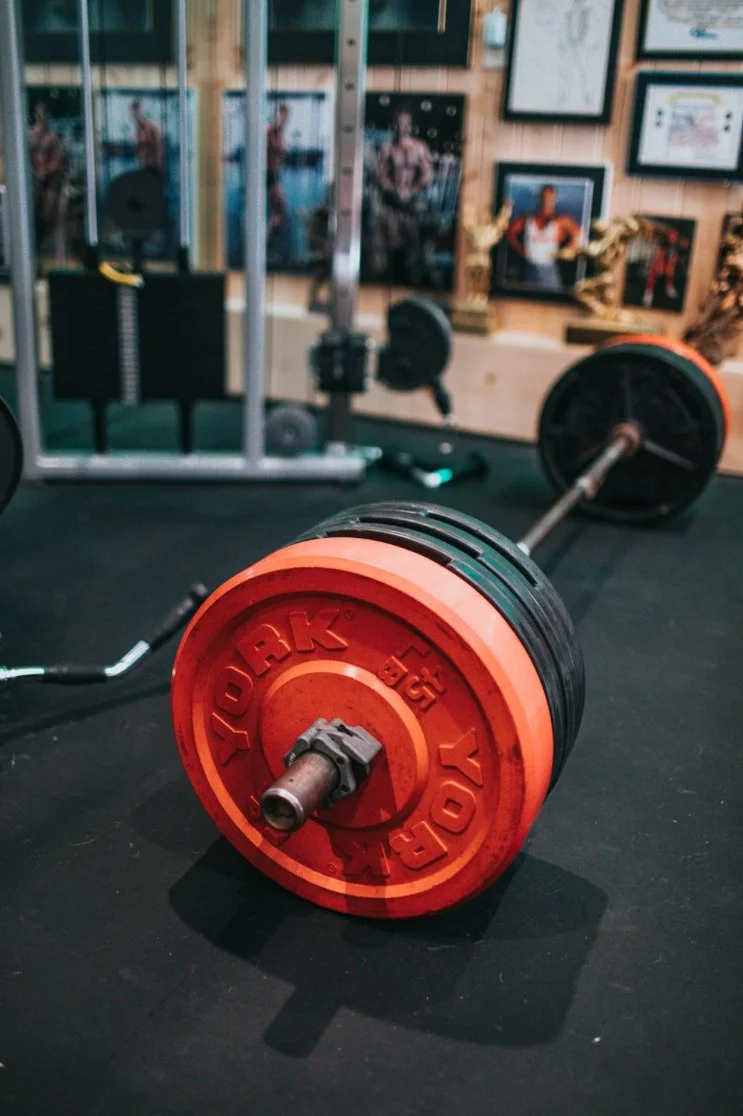
Mastering Technique: High Priority
Whether you're just getting started with your fitness journey or looking to level up your workouts, there's one thing you gotta know: technique is everything! Yes, I'm talking about the way you move your body during exercise, and trust me, it's super important for staying safe, getting stronger, and reaching your goals.
Why Technique Matters
Okay, let's break it down. Imagine you're playing your favorite game, and there's this super tricky level you wanna beat. You know what helps? Using the right moves at the right time, right? Well, think of exercise like that. Using the right technique is like using the perfect combo – it helps you crush your fitness goals without getting hurt.
Stay Injury-Free
Now, I know you're all about pushing yourself, and that's awesome! But here's the deal: using bad technique is like trying to play that game blindfolded. You might think you're doing great, but you're actually setting yourself up for a big "game over" moment – AKA an injury. And let's be real, nobody wants that!
Get Stronger, Faster
Ever wonder why some people seem to get stronger way quicker than others? Well, here's the secret: they've mastered their technique! When you do exercises with the right form, you're targeting those muscles like a boss. That means you'll see gains faster and be able to take on even bigger challenges in no time.
How to Nail Your Technique
So, how do you make sure you're doing it right? Easy! Start slow and pay attention to how your body moves. Whether you're lifting weights, doing yoga, or going for a run, focus on keeping everything in line and moving smoothly. It might feel weird at first, but trust me, it'll pay off big time.
Ask for Help
Don't be afraid to ask for help! If you're not sure about the right way to do an exercise, ask a coach, teacher, or experienced friend for guidance. They'll show you the ropes and help you avoid any rookie mistakes.
Practice, Practice, Practice
Like anything worth doing, mastering technique takes practice. So, don't get discouraged if you don't nail it on the first try. Keep at it, and soon you'll be busting out perfect reps like a pro.
Listen to Your Body
Last but not least, always listen to your body. If something feels off or hurts in a bad way, stop and take a breather. It's better to play it safe than to risk getting hurt.
In Conclusion
So, there you have it – the lowdown on why technique is the secret sauce to crushing your fitness goals. Remember, whether you're pumping iron, striking a yoga pose, or hitting the pavement, doing it right is the key to success. So, go out there, give it your all, and show that workout who's boss!
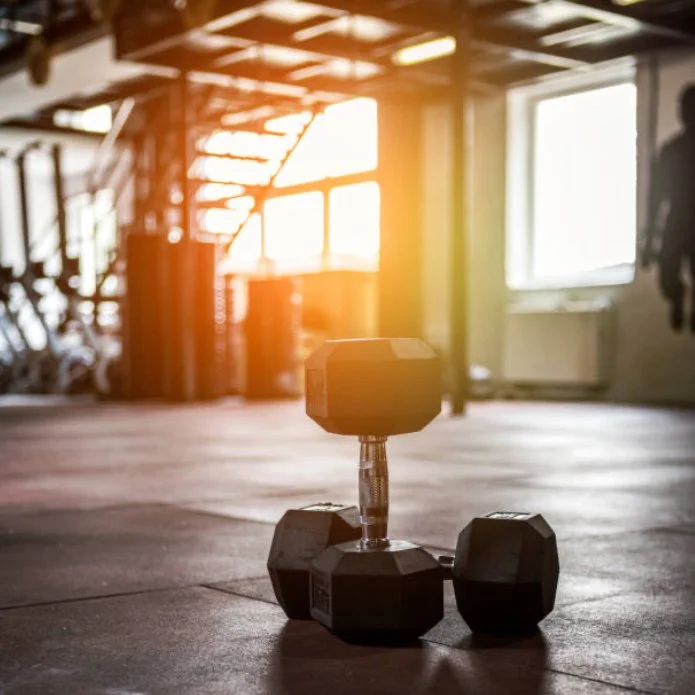
Embrace the Burn: The Science and Benefits of Training in High Heat
Training in high heat has long been a method embraced by athletes and fitness enthusiasts seeking to push their limits and enhance performance. But beyond the sweat and discomfort lies a wealth of scientific benefits and physiological adaptations that can transform your workouts and overall fitness level. In this blog, we'll dive into the science behind training in high heat, its potential benefits, and how to safely incorporate it into your fitness.
The Science Behind Training in High Heat:
Exercising in high heat environments, whether through hot yoga, outdoor runs on scorching days, or heated indoor workouts, triggers a series of physiological responses aimed at regulating body temperature. When the body is exposed to elevated temperatures, it responds by increasing sweat production to dissipate heat through evaporation, thus cooling the body.
Furthermore, training in high heat environments can lead to adaptations that improve heat tolerance and exercise performance. Over time, the body becomes more efficient at dissipating heat, allowing individuals to perform better in hot conditions.
Benefits of Training in High Heat:
1. Improved Heat Tolerance: Regular exposure to high heat conditions helps the body adapt and become more tolerant to heat stress, enabling people to perform better in hot environments.
2. Enhanced Endurance: Training in high heat environments can boost endurance improving cardiovascular function, leading to better performance in endurance activities.
3. Accelerated Fat Loss: Exercising in high heat environments can increase calorie expenditure due to elevated heart rate and increased sweat rate, potentially aiding in weight loss and fat burning.
4. Mental Toughness: Enduring challenging workouts in high heat conditions can build mental resilience and grit, transferring to improved performance in all areas of life.
5. Time Efficiency: High heat training can provide similar physiological benefits to longer workouts in cooler environments, allowing individuals to achieve their fitness goals in less time.
Safety Considerations:
While training in high heat offers numerous benefits, it's crucial to prioritize safety and take precautions to prevent heat-related illnesses such as heat exhaustion or heatstroke. Here are some safety considerations:
1. Stay Hydrated: Drink plenty of water before, during, and after your workout to prevent dehydration.
2. Dress Appropriately: Wear lightweight, breathable clothing that allows sweat to evaporate and helps regulate body temperature.
3. Know Your Limits: Listen to your body and adjust the intensity and duration of your workouts accordingly. Take breaks as needed and don't push yourself beyond your limits.
4. Acclimate Gradually: Gradually expose yourself to higher temperatures over time to allow your body to adapt and minimize the risk of heat-related illnesses.
5. Choose the Right Time: Schedule your workouts during cooler parts of the day, such as early morning or late evening, to avoid the peak heat hours.
Incorporating High Heat Training into Your Fitness Routine:
Start by gradually incorporating high heat training into your fitness routine, beginning with shorter durations and lower intensities and gradually increasing as your body adapts. Experiment with different modalities such as hot yoga, heated indoor cycling classes, or outdoor runs on warm days to find what works best for you. Remember to listen to your body, stay hydrated, and prioritize safety above all else.
Conclusion:
Training in high heat environments offers a myriad of benefits, from improved heat tolerance and endurance to accelerated fat loss and mental toughness. By understanding the science behind high heat training and taking safety precautions, you can safely incorporate this challenging yet rewarding method into your fitness regimen. So, embrace the burn, push your limits, and watch as your performance and fitness levels soar to new heights.

Mastering Portion Control: The Key to Effective Training Nutrition
Hey there, champ! Whether you're looking to bulk up, slim down, or just feel healthier, what you eat is super important. But here's the thing: it's not just about eating the right stuff – it's also about how much of it you eat. That's where portion control comes in, and trust me, it's a game-changer! Let's break it down in a way that makes sense for a you.
Why Portion Control Rocks🪨:
Okay, so why should you care about portion control? Well, think of your body like a finely-tuned machine. It needs just the right amount of fuel to run smoothly. Too much, and you might feel sluggish or pack on extra weight. Too little, and you won't have enough energy to crush it in your workouts. Portion control helps you find that sweet spot where you're giving your body what it needs without going overboard.
Tips for Nailing Portion Control:
1. Keep it Simple with Your Hand: Your hand is like a built-in portion guide! Your palm is about the right size for a serving of protein, like chicken or fish. Your fist is perfect for veggies, and your thumb can measure out fats like peanut butter or avocado. Easy, right?
2. Slow Down and Enjoy: Ever heard the saying "eat to live, don't live to eat"? Well, it's totally true! Instead of scarfing down your meals in record time, take a moment to savor each bite. Pay attention to when you start feeling full – that's your body's way of saying, "Hey, I'm good, thanks!"
3. Mix it Up on Your Plate: Imagine your plate is like a rainbow, with different colors representing different food groups. Aim to fill half of it with veggies, a quarter with protein (think meat, tofu, or beans), and the last quarter with grains or starchy veggies like potatoes. Boom – balanced meal, nailed it!
4. Snack Smart: Snacks are awesome, but they can quickly turn into a bottomless pit if you're not careful. Instead of munching straight from the bag, portion out your snacks ahead of time. That way, you'll know exactly how much you're eating and avoid accidentally demolishing the whole bag of chips in one sitting (we've all been there).
5. Listen to Your Body: Your body is pretty smart – it knows what it needs! Pay attention to how different foods make you feel. If something leaves you feeling sluggish or bloated, maybe it's time to dial back on the portion size or swap it out for something else.
Why Portion Control Rocks for Your Training🏋️♀️🏋️:
Okay, so how does all this portion stuff tie into your workouts? Well, think of it like this:
1. More Energy, More Fun: Eating the right portions of the right foods gives you the energy you need to crush it in the gym or on the field. No more feeling like you're running on empty halfway through your workout – you've got this!
2. Faster Recovery: After a tough workout, your body needs the right nutrients to bounce back stronger than ever. Portion control ensures you're getting enough protein and carbs to repair those muscles and refuel your energy stores, so you're ready to go again in no time.
3. Stay Lean, Stay Mean: Whether you're trying to pack on muscle or trim down a bit, portion control helps you stay on track with your goals. It's all about finding that balance that keeps you feeling strong and healthy.
In a Nutshell:
Portion control might sound like a drag, but trust me, it's your secret weapon on your fitness journey. By mastering the art of portion sizes, you'll fuel your body like a pro, crush your workouts, and feel amazing inside and out. So grab that plate, load it up with goodness, and get ready to conquer the world – one perfectly portioned meal at a time! You've got this, champ! 🥇
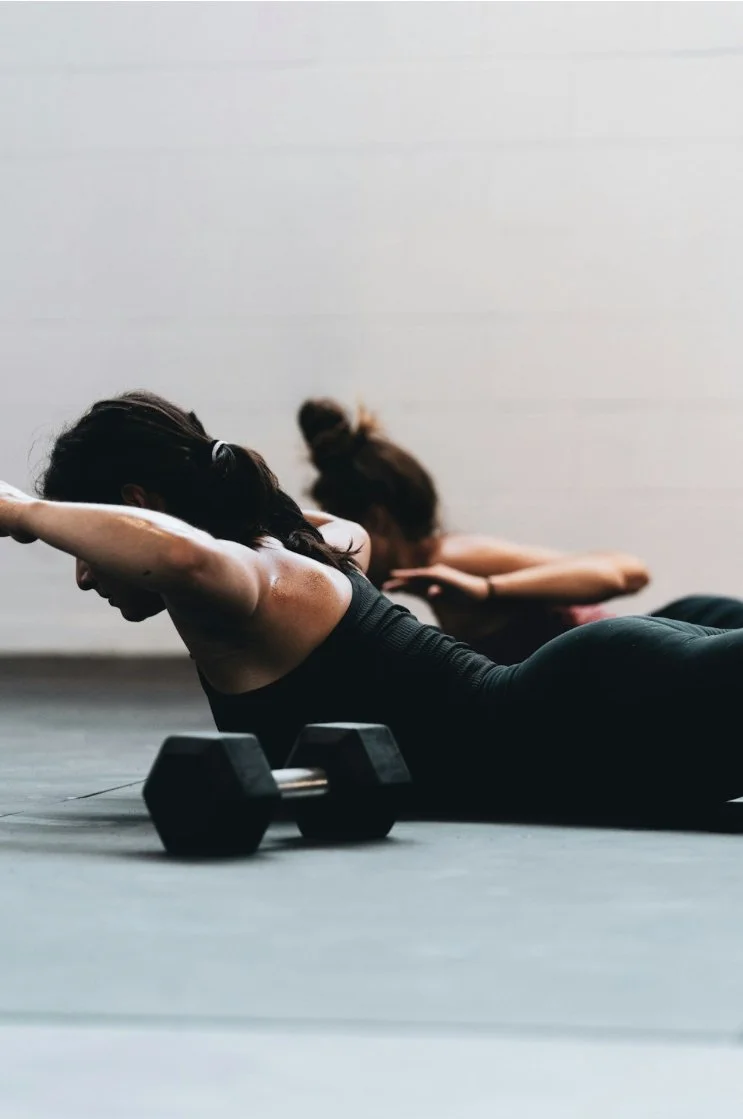
The Power of Core Strength: Unleash Your Inner Athlete
Hey there, fitness enthusiast! Let's dive into why building a strong core is the secret weapon to leveling up your performance and overall fitness game.
Think of your core as the powerhouse of your body, like the engine in a sports car. It's not just about having killer abs (although that's a nice bonus), but it's about enhancing your athletic abilities and preventing injuries.
When you have a strong core, you'll notice improvements in stability and balance, which are essential for dominating your favorite sports and activities. Whether you're hitting the basketball court, shredding on a skateboard, or crushing it in the gym, a solid core provides the stability and control you need to perform at your best.
But the benefits don't stop there! A strong core also helps improve your posture, reduce the risk of back pain, and even enhances your breathing and digestion.
So, how do you build a rock-solid core? Incorporate exercises like
Planks: Start by holding a plank position for 30 seconds, gradually increasing the duration as you get stronger. Aim for 3 sets, with a 1-minute rest between sets.
Russian Twists: Sit on the floor with your knees bent and feet flat. Hold a weight or a water bottle with both hands and twist your torso from side to side, tapping the weight on the ground beside you. Aim for 3 sets of 15 reps on each side.
Bicycle Crunches: Lie on your back with your hands behind your head and legs lifted off the ground. Alternate bringing your right elbow towards your left knee while extending your right leg straight out, then switch sides. Aim for 3 sets of 20 reps (10 on each side).
Dead Bug: Lie on your back with your arms extended towards the ceiling and legs lifted off the ground, knees bent at a 90-degree angle. Slowly lower one arm and the opposite leg towards the ground, keeping your lower back pressed into the floor, then return to the starting position and repeat on the other side. Aim for 3 sets of 12 reps (6 on each side).
Standing Core Stabilization: Stand tall with your feet hip-width apart and engage your core muscles. Hold a resistance band or cable machine handle at chest height with both hands. Without rotating your torso, push or pull the band/cable away from your body, resisting the movement with your core. Aim for 3 sets of 15 reps in each direction.
Mix it up, challenge yourself, and watch as your strength and athleticism soar to new heights.
Remember, a strong core isn't just about looking good it's about feeling unstoppable and ready to tackle whatever challenges come your way. So, unleash the power of your core, and let's crush those fitness goals together!

